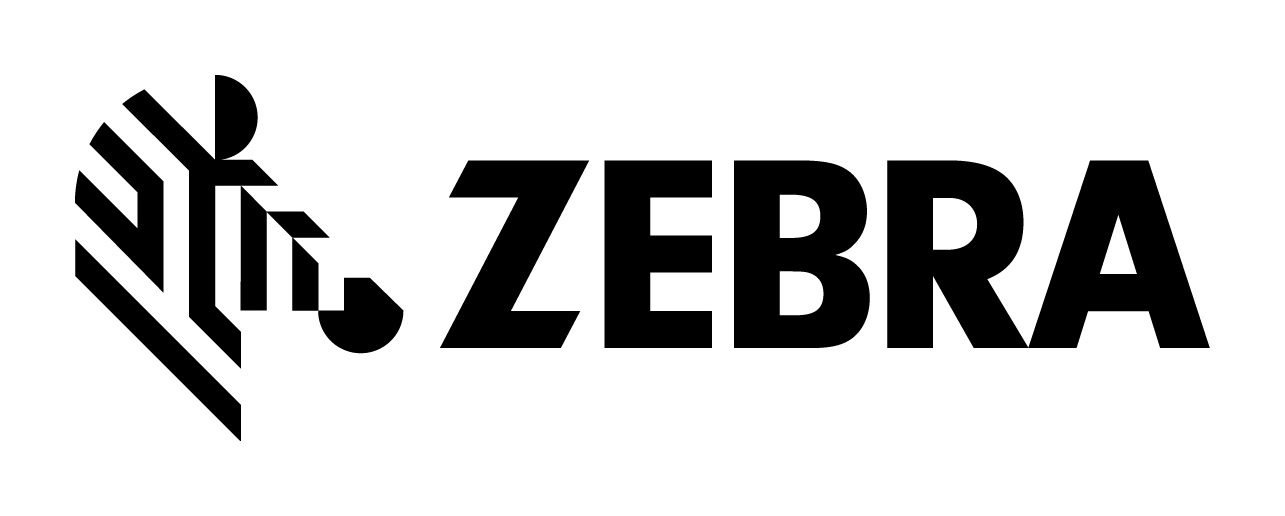
Pushing the Envelope – facing financial troubles, the (US) Postal Service turns to e-commerce
IT SEEMED LIKE JUST ONE MORE E-COMMERCE PITCHMAN trying to sell an idea to
a group of venture capitalists. John Kelley, VP of Imagitas, a marketing
firm, stood before a half-dozen potential investors in a Washington office
building last November. His plan was intriguing: Provide Web-based change-or-address services to the 41 million Americans who move each year. With a few clicks customers could update their postal addresses and notify their credit card companies, utilities and magazines of their new location. The payoff could
be enormous: National advertisers would pay handsomely to post ads on the
site,link to their services and market coupons in the hopes of selling
everything from hardware to moving and phone service to the new residents.
The would-be investors listened with interest, but they were hardly your
typical VCs. In fact, they're not known for taking big risks with
e-commerce plays. They're vice presidents at the U.S. Postal Service.
But the leader of the group, Deputy Postmaster General John Nolan, gave the
project the green light. "This sounds smart," he later said in his typical
measured voice. "We already do it in hard copy. It makes sense to do it on
the Net." The change-of-address project, to launch in April as MoversGuide.com,
is one of more than a dozen revenue-generating online projects under way at
the once stodgy Postal Service. Nolan, who has even set up an in-house venture
capital wing and a business incubator, is trying to reinvent an agency that
Benjamin Franklin first presided over some 225 years ago. The task is
urgent:
If the Titanic of government bureaucracies doesn't capitalize on the
Internet soon, it could sink into oblivion.
America's growing reliance on e-mail, online bill-paying and other
electronic communications is undercutting projected growth in Postal Service revenue.
Last year, the agency lost money for the first time since 1994. Even bigger
losses, up to $3 billion, are expected this year. (See chart, page 72.) But
perhaps the worst news for the Postal Service is the growing number of
private-sector competitors that are aiming to shut down its online plans.
These companies are howling to Congress that the Postal Service, armed with
its government-sanctioned monopoly on mail delivery, has an unfair
advantage over rivals in the online arena. United Parcel Service has been vocal in its opposition, as have trade associations, whose members include new Postal
Service rivals such as Yahoo, Intuit and online banks. "This effort to try
and reinvent themselves as a dot-com company does not have a very bright
future" says Tad Segal, public affairs director with UPS, the Postal Service's arch nemesis on Capitol Hill. "E-commerce is such a robust and multifaceted area
serviced by the private sector that it's hard to see a real justification
for government involvement."
It's not only the Postal Service that's getting excited about using
technology to make a few bucks for Uncle Sam. The heated debate over that agency's online plans offers a preview of the future of e-government as other state, local and federal agencies consider launching tech-driven businesses. The Internal Revenue Service is hinting at the sale of tax preparation software on the Web, and the General Services Administration is considering online auctions of government surplus goods. Though many of these initiatives are just getting off the ground, it's clear that the Web is already blurring the line
between the public and private sectors.
It's not far-fetched to imagine how the Internet could write the epitaph
for the venerable Postal Service. A large part of its core business — a
monopoly on the delivery of first-class (letters) and third-class (junk) mail — is sagging under the weight of online competition. A recent report by the
Government Accounting Office found that 68 percent of the 880 million
Social Security checks, tax refunds and other government payments were sent
electronically last year, resulting in a $180 million revenue loss for the
Postal Service. The report also found mailings from banks to customers
dropped 18 percent between 1996 and 1999. The decline in mail service has plunged the Postal Service back into the red, which is bad news for everyone. Even though the ink is barely dry on the newly printed M-cent stamp, the Postal Service is already preparing to ask for another rate hike.
Enter Nolan, the No. 2 man at the Postal Service and the main guy behind
the idea that e-commerce can save the agency. Another booster is his boss,
Postmaster General William Henderson, who recently announced he is leaving
the agency by May. Nolan, who's under consideration for the top job, looks like
the postmaster from central casting. With his thinned hair, spectacles and
metered tones, all he's missing is a short-sleeved shirt and visor. But
looks can fool you. Execs such as Imagitas' Kelley speak of Nolan as part of a
"new guard" that's "willing to take risks."
Nolan, 52, first joined the Postal Service in 1970 as a 22-year-old
management trainee. He worked his way up from a mail room supervisor to postmaster and general manager of the New York City Post Office, the world's largest. He left in 1989 to direct operations at Merrill Lynch's printing and mail division, turning that into a profitable business for the brokerage house. He returned to the Postal Service last year.
It was Nolan who came up with the idea for an "internal VC group" —
formally called the eBusiness Opportunity Board — along with Pete Jacobson, the
Postal Service's CTO and a veteran of Unisys and Lockheed Martin. In creating the eBOB, which funds and incubates e-commerce projects, they talked to large
companies that were grappling with great technological change driven by the
Internet: AT&T, Cisco, General Electric and IBM. These discussions inspired
Nolan and Jacobson to adopt Web-based supply purchases and to undertake a
business-to-business exchange to coordinate intercity trucking and lease
space on postal trucks that aren't full. Those ideas were implemented without
much controversy. But the same cannot be said for the Postal Service's online
consumer projects.
The Postal Service signaled its intention to become an online variety store
when it chose the domain .com instead of .gov for its Web site
(www.usps.com).
There, customers can buy online greeting cards and stamps, pay bills and
arrange returns of goods bought from such-and-such.com. It's a strategy
that pits the Postal Service against a range of industries, from online banking
to greeting cards manufacturers, and many companies are crying foul.
Critics argue that the Postal Service has an unfair competitive advantage
and should stay out of private enterprise. The agency's mail-delivery monopoly
gives it access to more than 130 million households and businesses, a
potentially huge market to tap for its online services. Beyond that, the
Postal Service pays no income or property taxes. Even its trucks, when
illegally parked, don't get ticketed. And forget about its rating from
Moody's; the Postal Service can draw a line of credit direct from the U.S.
Treasury. "As a general rule, unless it's an enhancement to their core
business, which is delivering the mail, I don't know that they should be
involved" says Ed Gleiman, former chairman of the Postal Rate Commission,
which sets postage rates and serves as the private sector's watchdog over
the agency.
Under Nolan's direction the Postal Service's online projects have ventured
far from traditional postal functions. Last April, the service launched the
electronic postmark for people who want a higher level of security for
their e-mail. This business competes with companies that provide other means of
secure electronic messages, such as VeriSign, the largest issuer of digital
signatures. In May, the agency launched PosteCS, a secure, private
online-document delivery system, and UPS promptly filed an antitrust
complaint alleging its rival product is disadvantaged because the Postal Service is using monopoly revenues to enter and conquer this new market. The case is pending before the Postal Service Rate Commission in Washington.
By July the Postal Service was auctioning stamps in conjunction with eBay
and talking up development of a universal e-mail domain for all Americans. That
project, which would pit the Postal Service against every Internet service
provider, portal and free e-mail provider, has yet to launch. In September,
people could e-mail newsletters or documents along with mailing lists to
the Postal Service, which distributes them to printing contractors and mails
them out. Just in time for the holidays, postal officials unveiled an online
personalized greeting card store in partnership with Cardstore.com, working
against such rivals as AmericanGreetings.com. And last month, the agency
landed the Social Security Administration as its first client for a new
secure electronic correspondence backed up by digital certificates.
Postal Service vs. the Private Sector
Competitors claim that the agency's mail-delivery monopoly gives its
e-commerce initiatives an unfair advantage.
POSTAL INITIATIVE DESCRIPTION PRIVATE SECTOR
COMPETITORS
Electronic Postmark Secure electronic VeriSign and other
date and time stamp digital-signature
for electronic vendors
communications
eBillPay Consumer bill-paying Paytrust.com, Bank One,
online Charles Schwab, Wells
Fargo, Chase Manhattan
and Yahoo
PosteCS Electronic postmark, UPS, Pitney Bowes and
tracking and tracing; Netherlands Postal
proof of delivery and Service
sender and receiver
authentication
Stamps Online Online stamps, phone Pitney Bowes,
cards, stationery and Stamps.com and Hallmark
other Postal Service
merchandise
MoversGuide.com Change-of-address Welcome Wagon and other
forms, notification advertising and
cards for friends, marketing vehicles,
banks and utilities local newspapers and
and advertising from online city guides
merchants
SOURCE: U.S. POSTAL SERVICE
While competing with some companies, the Postal Service has partnered with
others to take greater advantage of its assets — trucks, letter carriers
and post offices. Returns Online agreed to have letter carriers deliver returns
from consumers who made purchases from e-retailers and catalog companies.
On a bigger scale, the agency struck a deal in January that will let rival FedEx
(and potentially other companies) set up drop-boxes beside some of the
38,000 post offices nationwide. The agreement could bring in $126 million to $232 million for the Postal Service, although some workers question the wisdom
of planting competitors' boxes on Postal Service property.
The agency drew the most criticism for its partnership with CheckFree, whic
h controls about 80 percent of the online bill-paying market. The new
service, eBillPay, lets consumers receive and pay bills electronically on the Postal Service Web site. But companies such as Bank of America, Charles Schwab and Yahoo already operate in this thriving market, and some complain that the
public's trust in the Postal Service creates an unlevel playing field. The
Postal Service didn't exactly undercut this argument when it rolled out its
marketing slogan: "Secure? Of course. It's the United States Postal
Service."
"They're moving farther and farther afield of their traditional role of
delivering the mail," says Jason Mahler, VP of the Computer and
Communication Industry Association. The trade group did a study in October that
criticized the government for competing with private industry, singling out eBillPay in particular. "They're in a situation where they're faced with losing
revenue, and so they're flailing about to find out where they can recoup the
revenue," says Mahler.
To the Postal Service's Nolan, the move into e-commerce is much like other
waves of technological evolution the agency has ridden — the Pony Express
gave way to the mail train, and the rails gave way to airmail. "In the
early 1900s, it took Congress six or seven years to allow us to move mail on
planes.
That was a ridiculous boondoggle," explains Nolan. "Well, now people are
saying this is ridiculous. We shouldn't have any place on the Internet. In
fact, we need to be where our customers are if we are to maintain this
universal service and affordable rates."
For Nolan to succeed, he first needs to win some friends on Capitol Hill.
That's not easy, since the Postal Service, as a federal agency, is barred
from lobbying. Postal officials, instead, are in the process of hiring an
outside public-relations firm. They are also considering bypassing Congress and
requesting that the White House appoint a presidential commission to
determine whether to further privatize postal operations. Regardless, House and
Senate committees are likely to convene hearings at the behest of competitors
complaining about the Postal Service's e-commerce forays.
Congress first lit the fire under the Postal Service's expansion plans in
the 1970s, when it transformed the U.S. Post Office Department — that old
bastion of patronage, financial neglect and civil service empire-building — into a self-supporting government corporation that's supposed to break even and
not depend on taxpayer subsidies. The agency hasn't always operated in the
black, but since 1994 it has enjoyed the economic boom times like everyone else.
Now Nolan and company say for the Postal Service to really operate like a
business, Congress needs to permit the agency to set its own rates, cut
labor costs and enter into revenue-sharing partnerships with other companies. The Postal Service Board of Governors has embraced the concept of further
postal reform, but Congress will be a much tougher sell.
That's because the Postal Service's adversaries have a lot of clout on
Capitol Hill. UPS, which went public in a $5.5 billion offering in 1999, last year deftly killed a five-year effort for postal reform. Every member of
Congress received a CD from UPS that outlined the Postal Services' failings. UPS is also a big spender in Washington, having contributed more than $1.5 million to congressional coffers in the 1999-2000 cycle alone, according to watchdog group the Center for Responsive Politics. "To a large degree, (the Postal Service's) new experiments have been a tremendous bust," says UPS public
affairs director Segal. He points to $85 million the agency lost on new
products and services, according to a 1998 government report. "That
included," snorts Segal, "developing a system to put cellular-phone towers on top of post offices, distributing phone cards and selling hats, mugs, ties and
T-shirts.
They're not very good at being innovative in markets in which they don't
have a monopoly."
Then there's the notion that the government should do away with the Postal
Service monopoly by simply selling off the agency. The idea isn't as
ridiculous as it sounds. The German government last year took public its
national postal service, Deutsche Post, and sold more than a quarter of the
stock. New Zealand and Sweden have also privatized their postal agencies
and eliminated the services' monopolies. "The bottom line is that mail delivery
should be no more of an essential government service than selling
groceries" says Ed Hudgins, director of regulatory studies at the CATO Institute, a libertarian think tank in Washington, who recently compiled a book of papers about the Postal Service entitled The Last Monopoly.
Even if Congress gives Nolan more leeway, his challenge to keep the Postal
Service in the black is daunting. So far, his e-commerce projects are not
recouping much revenue lost from snail mail's decline. The Postal Service
reported last summer it would see $300 million in e-business this revenue
year. But the Government Accounting Office, which has tried to assess the
situation but found the Postal Service's financial data unreliable, is
skeptical. The Postal Service's latest five-year plan predicts it won't see
significant online revenue growth for several years.
The agency also faces mounting labor costs. In fiscal year 2000, the Postal
Service employed nearly one-third of the federal civilian workforce —
almost 900,000 mostly unionized employees — and that number is growing. Last year the Postal Service added more than 2 million mail delivery points to meet
the demands of population growth. The Government Accounting Office found that
labor still accounts for 85 percent of Postal Service costs, despite
billions of dollars invested in new technologies and other labor-saving plans over the years.
The hurdles are high, but the entrepreneur in Nolan keeps coming up with
ideas to clear them. His latest brainstorm is to let the Postal Service use
e-mail to notify you if you've got snail mail in your P.O. box. Or perhaps you can e-mail the agency if you have a package you want your letter carrier to pick
up along the route. The possibilities are endless when almost every
American is already a customer.
E-mail: [email protected]













